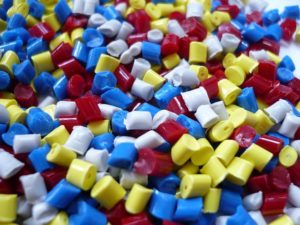APPLICATIONS OF TECHNOLOGY:
- Biological production of a vitrimer precursor, β-keto-δ-lactones (BKDLs), for use in the field of fragrance and pharmaceuticals
- Usage in libraries for lactone compounds screening due to the synthesis of diversified BKDLs
BENEFITS:
- Higher purity of BKDLs products with specific and well controlled biosynthesis by Type I modular polyketide synthases (PKSs)
- Diversifies types of BKDLs (aliphatic and aromatic) and substitutions at γ and δ positions, leading to different properties in plastic generated
- Production in different hosts, and a high TRY achieved in Staphylococcus albus, a microbe that can utilize plant hydrolysate to produce BKDLs, which is cheap and environmentally friendly
BACKGROUND:
- Plastics in use today are predominantly single-use and rarely recycled. A new class of dynamic covalent polymer networks, known as vitrimers, which combine the processing and recycling ease of thermoplastics with the performance advantages of thermosets provides alternatives for the environment protection from waste plastics. Most vitrimers are differentiated from classical thermosets in that they can be chemically de-polymerized, typically into small molecules or short oligomers, including β-keto-δ-lactones (BKDLs) and diacids. For decades, microbial production of commodity chemicals is limited in the diversity of the molecules produced by natural or modified enzymes. Novel platforms are needed to develop these commodity chemicals.
TECHNOLOGY OVERVIEW:
JBEI researchers developed a platform to biosynthesize β-keto-δ-lactones (BKDLs), a valuable monomer of vitrimer, which is a highly recyclable plastic polymer. The technology of recombining the Type I polyketide synthases (PKSs) and other enzymes demonstrates a promising strategy for the synthesis of diversified BKDLs.
Researchers built a platform to find valid PKSs which can produce BKDLs. The identified PKSs are not only able to produce aliphatic BKDLs, but also aromatic BKDLs. Based on the specific targets, certain PKSs are demonstrated to diversify BKDLs at γ and δ positions, potentially leading to new properties of the plastic. Additionally, an efficient PKS system can be obtained by recombining a library of candidate primary and secondary modules of PKSs with selected natural PKS intermodular linkers. These candidate modules are either reported or genome mined to have the necessary function for the BKDL synthesis. Combining with the computational modeling of the BKDLs, BKDLs with demanded properties can be predicted, guiding the development of the PKS systems for commercial applications. Besides PKSs, thiolases were also demonstrated to produce aromatic BKDLs as well as aliphatic BKDLs when combined with reduction enzymes. Enzymes can also be combined with PKS modules to produce BKDLs, further diversifying the development of BKDL biosynthesis platforms. Biosynthesis of 4-methyl-5-isobutyryl-BKDL in S. albus was demonstrated and 27.5 mg/L 4- methyl-5-isobutyryl-BKDL was produced.
JBEI is looking for an industry partner that will collaborate with researchers to scale up BKDLs production and diversification.
DEVELOPMENT STAGE: Proven principle
PRINCIPAL INVESTIGATORS:
- Jay D. Keasling
- Robert Haushalter
- Zilong Wang
- Seokjung Cheong
STATUS: Patent pending.
OPPORTUNITIES: Available for licensing or collaborative research.
SEE THESE OTHER BERKELEY LAB TECHNOLOGIES IN THIS FIELD:
Integrated Separation/Chemical Recycling of Mixed Polyester Waste Streams 2021-078
